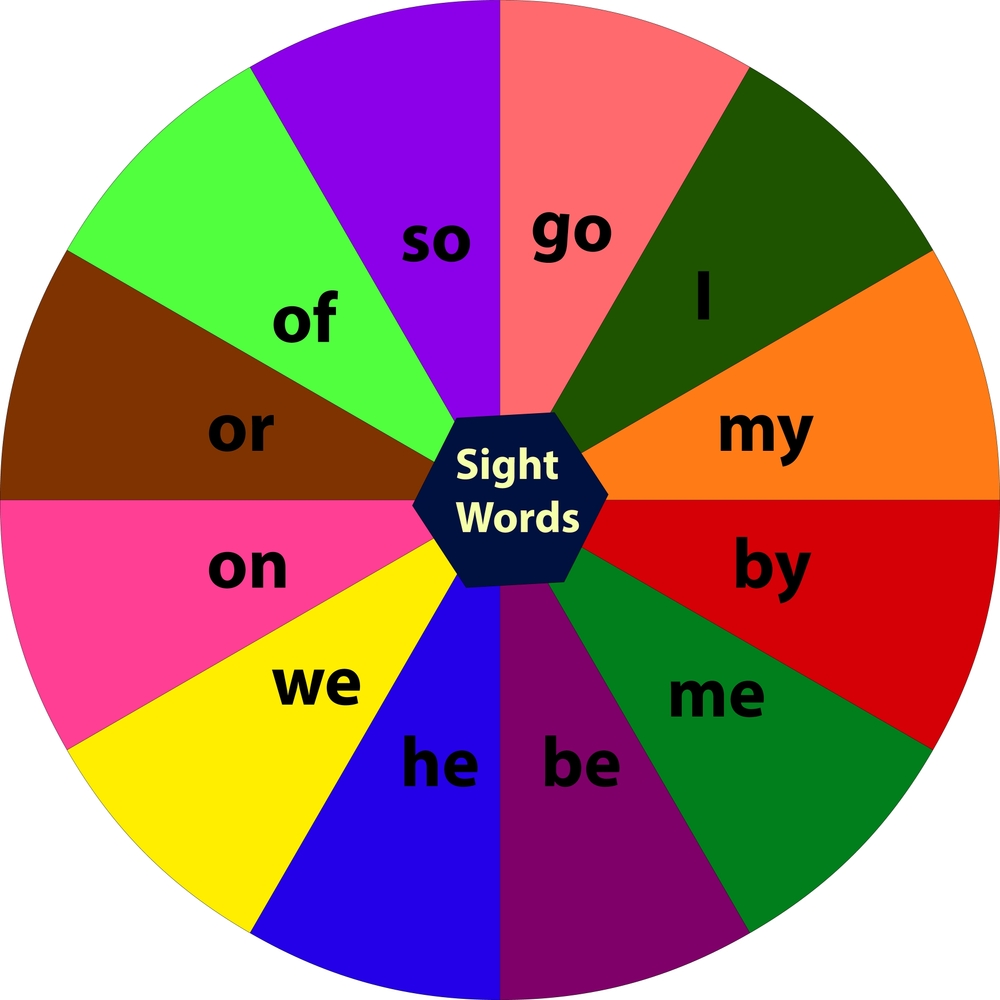
The acquisition of sight words in early education, particularly during the kindergarten phase, plays a pivotal role in the development of literacy skills. Sight words are commonly used words that young readers learn to recognize instantly, without needing to decode them phonetically. Mastering this list of words sets the foundation for fluent reading and comprehension, acting as building blocks for more complex literacy skills.
The Proportion of Sight Words in English Text
Research has shown that sight words constitute approximately 50-70% of the words found in most English texts, especially in children’s literature. This high percentage underscores the importance of mastering sight words for effective reading.
Since these high-frequency words often include prepositions, pronouns, conjunctions, and verbs, they serve as the glue holding sentences and ideas together, thus being critical for grasping the meaning of text.

Significance of Sight Words in Reading Comprehension
The ability to instantly recognize sight words without pausing for decoding accelerates the reading process. This rapid recognition is essential because it maintains the natural rhythm of reading, allowing children to read in phrases and complete thoughts rather than single words. This fluency is a vital component of reading comprehension, as it supports the understanding of more complex sentences and story structures.
Cognitive Load Reduction: When children recognize sight words effortlessly, they reduce their cognitive load. This means that less mental effort is required for decoding, which frees up cognitive resources to focus on the meaning of the text. The ability to quickly identify these words is critical in enabling young readers to construct meaning from sentences and paragraphs without becoming bogged down by the mechanics of reading.
Vocabulary Expansion: As children become familiar with sight words, they also expand their usable vocabulary. A well-developed vocabulary is intrinsically linked to reading comprehension, as it allows children to make sense of what they read and to infer the meaning of unfamiliar words from context.
Building Blocks for Literacy: Sight words serve as the foundational building blocks for literacy. By securing a child’s grasp on these essential words, we fortify their ability to approach new reading materials with confidence. Knowledge of sight yet goes well beyond mere word recognition; it is crucial for understanding sentence structure, punctuation, and the grammatical function of words, all of which are integral to grasping the overall message of the text.
When instructing young learners in sight words, educators often employ multi-sensory approaches, incorporating visual, auditory, and kinesthetic elements to reinforce memory. These methods can include flashcards, tracing, writing in sand, chanting, and using apps or digital platforms that gamify the learning experience. Such strategies cater to the various learning preferences of children, aiding in the retention and recall of these crucial words.
By integrating sight words effectively into early literacy programs, educators set the stage for a lifetime of reading success.
Mastering the Basics: Essential Kindergarten Sight Word Lists
Understanding the role of sight words in facilitating reading proficiency in young learners, educators have long relied on curated lists of these high-frequency words. Among the most recognized of these compilations are the Dolch Word List and the Fry Sight Word List. Each of these listings plays a crucial role in early childhood education by equipping students with a firm foundation in reading.
The Dolch Word List: A Historical Overview
These are the words that Dr. Dolch identified through his study of children’s books of the era, recognizing that a small subset of words formed the core vocabulary for young readers. The Dolch list has been instrumental in teaching children to read for nearly a century and its influence can still be felt in modern reading curricula.
The Dolch list is categorized into levels ranging from pre-kindergarten to third grade, with a special emphasis on the 40 pre-primer words essential for kindergarteners. These include simple and elemental words such as “and,” “is,” “the,” and “you.” The list is unique because it contains many words that cannot be sounded out using standard phonics rules and must, therefore, be recognized on sight.
The Fry Sight Word List: Expanding the Lexicon
Developed by Dr. Edward Fry in the 1950s and updated in 1980, the Fry Sight Word List is another critical resource that has been adopted by educators. This compilation expands upon Dolch’s work and includes a total of 1,000 words, which are touted to represent approximately 90% of the words that are used more frequently in English text written for students from kindergarten to twelfth grade.
This list is strategically divided into ten levels with 100 words each, with the first 100 words laying the groundwork for kindergarten reading skills. Not only does the Fry list provide a comprehensive vocabulary base for young readers, but it also gives educators a structured progression for introducing new words.
Bridging Educational Approaches
Both the Dolch and Fry sight word lists have stood the test of time because they effectively bridge traditional and modern educational approaches. They accommodate the natural development of children’s reading skills by offering a clear path from foundational word recognition to more complex literacy competencies. As such, they remain indispensable tools in the early education landscape.
By embedding sight words into their teaching methodologies, educators can provide children with the key to unlock reading success. This harmonious blend of historical perspective and contemporary application underscores the timeless significance of the Dolch and Fry sight word lists in shaping kindergarten education.

Sample Sight Words for Early Learners
In preparing early learners for the challenges of reading, educators often introduce sight words that are most likely to appear across the spectrum of children’s literature and daily language use. These words, while sometimes defying phonetic rules, lay the groundwork for strong reading skills and serve as pivotal stepping stones toward literacy. Below is a comprehensive list of sight words that are generally considered appropriate for kindergarteners. This list can be used as a foundational tool for reading instruction and literacy development.
Kindergarten Sight Word List
Basic Nouns:
Apple
Baby
Ball
Dog
Doll
Game
Milk
Name
School
Toy
Common Verbs:
Come
Jump
Look
Make
Play
Run
See
Sit
Swim
Walk
Fundamental Adjectives:
Big
Blue
Good
Hot
Little
New
Pretty
Red
Yellow
Basic Prepositions and Pronouns:
At
For
He
In
Plan
She
To
With
You
Conjunctions and Articles:
And
As
But
Or
The
Everyday Interjections and Adverbs:
Here
No
Not
Oh
Please
Up
Yes
Incorporating these words into daily learning activities can greatly enhance a child’s ability to recognize and understand common language patterns. When designing lesson plans and instructional materials that feature these sight words, it’s important to create engaging and interactive experiences.
Strategies for Teaching Sight Words
Repetition and Routine: Incorporate the sight words into a daily reading practice. Use word walls, flashcards, and repeat readings of texts that include the sight words.
Contextual Learning: Present sight words within the context of simple sentences to help children understand their meaning and usage. For example, “The dog is big” uses both “the” and “is” from the sight word list.
Multi-Sensory Approaches: Engage children through tactile and kinesthetic activities like tracing words in sand, assembling letters to form sight words, and using finger paints to write them.
Positive Reinforcement: Use praise and small rewards to encourage children as they successfully recognize and use sight words. This enhances their motivation and enjoyment of the learning process.
Integration Into Play: Sight word bingo, memory match games, and treasure hunts that require reading sight words to follow clues can make learning these critical words an enjoyable activity.
Consistently applying these teaching strategies can help children assimilate sight words into their vocabulary. By doing so, educators ensure that students are not only able to recognize these words on sight but also understand their function within sentences, contributing to a solid foundation for literacy.
Helping children gain mastery over this list of kindergarten-appropriate sight words prepares them for more advanced reading materials and supports their journey to becoming proficient readers.
Introducing Sight Words as part of Readability
Empower your child to conquer the world of reading with Readability Tutor, the award-winning app that transforms the way young learners engage with words. As they embark on their educational journey, mastering sight words is crucial for reading fluency and comprehension. Readability Tutor stands out by offering personalized feedback with its interactive voice-based AI tutor, making the learning process both engaging and effective for students in grades K-6.
Is your kindergartener ready to navigate the vast sea of language with confidence? Readability Tutor’s carefully designed platform supports critical thinking and vocabulary building, ensuring that your child not only recognizes sight words instantly but understands them within the context of their reading.
Join the Readability Tutor community today and tap into the potential of an AI-powered reading experience and watch as your child strides forward with confidence, one word at a time. Try Readability Tutor now and open the doors to a lifetime of reading success.

 Español
Español